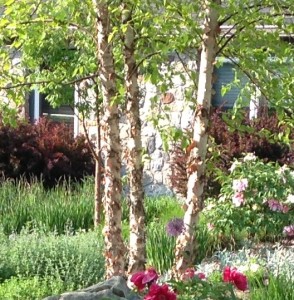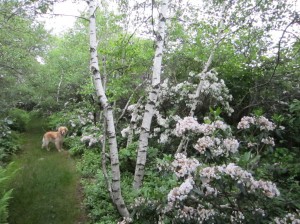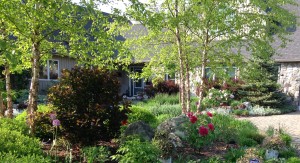Hello fellow readers, I’ve been accused of being a birch lover, and it’s true. In fact, their glorious bark and see-through leaves have earned them beloved birch status as one of my favorite trees.
Last week we spoke about the trees tolerant of wet conditions that The Nature Conservancy planted to help preserve the Paulinskill River (link to column below). The lineup includes two varieties of Birch -Yellow Birch / Betula alleghaniensis and River Birch / Betula nigra. Tom from Andover, NJ, loves Birch trees too but wonders if they’re right for our climate. He’s heard they are too soft wooded and short-lived.
Beloved Birchs bad Reputation
Birch does have a bad reputation which I think is unfair. It’s true they have shallow root systems and therefore do not handle even short periods of drought or heated soil well, but they thrive in cool, moist soils. So select a site where soil will remain shaded by other plants yet where the leaves will enjoy the full sun for most of the day.
Betula nigra ‘Heritage’ or ‘Dura Heat’ River Birch is more tolerant of heat and dryness than other varieties and is extremely resistant to bronze birch borer and leaf spot diseases –two issues that give Birch a bad rap. With layers of salmon-colored bark peeling back to reveal creamy white inner bark, it’s stunning in our winter landscape and can be grown as either a single trunk or multi-stemmed tree.
Birch Go with the Flow
Its true Birch is soft-wooded, which some say makes them susceptible to winter damage. But its pliable wood is advantageous in enduring winds, ice, and snow and can go with the flow. If beloved birch is planted in the right environment and provided proper cultural care (translated, enough water), they will thrive for 40 to 50 years.
Proof of performance resides in one of my favored respite spots – Big Pocono State Park, which sits on top of Camelback Mountain Resort in Tannersville, PA. I believe it’s the highest elevation in the area, and I’ve coined it to be the Top of the World as you can see parts of eastern Pennsylvania and portions of New Jersey and New York from there. The trails are graced with native Paper Birch /Betula papyrifera that have adapted well to the windy conditions.
As written in the Tao Te Ching (Chapter 76 translation by Stephen Mitchell), “The hard and stiff will be broken. The soft and supple will prevail.” Garden dilemmas? AskMaryStone@gmail.com (and on your favorite Podcast App.)
Column updated 8/26/21
Link to the story about the Preservation of the Paulinskill River





